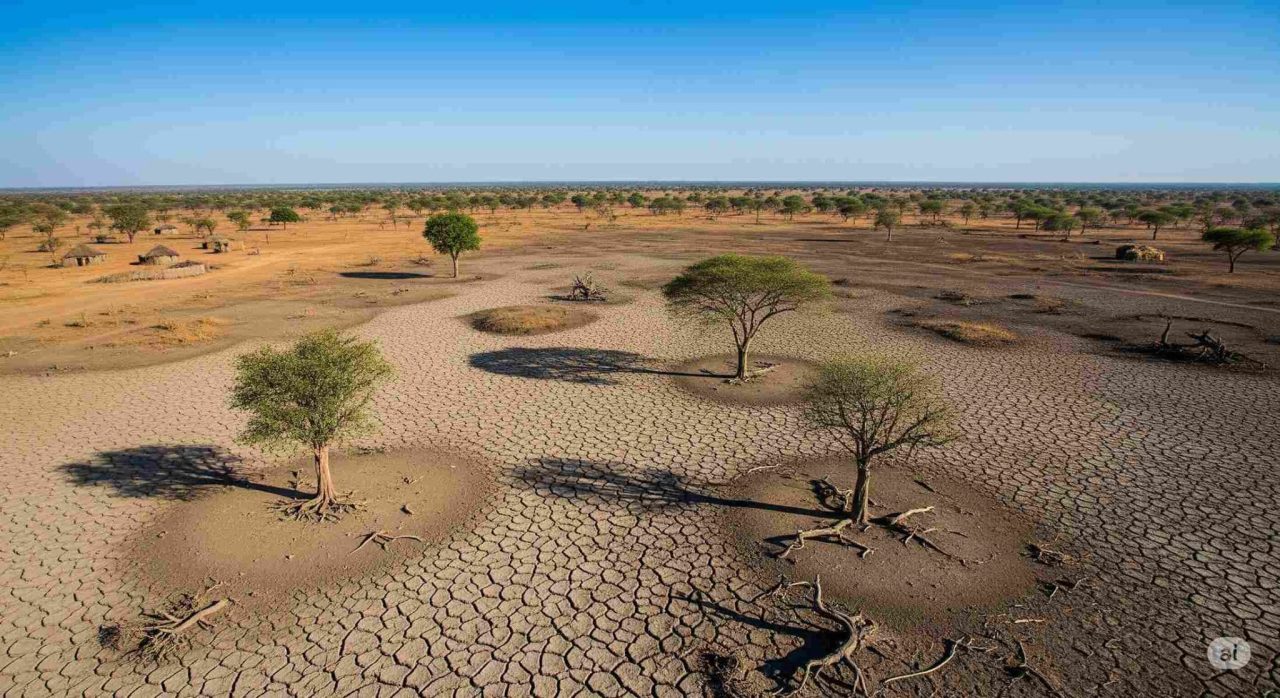
UN releases Drought Hotspots 2025 report
The Drought Hotspots Around the World 2023–2025 report offers a detailed global overview of the countries most affected by drought. Since 2023, rising global temperatures and mounting pressure on land and water resources have triggered some of the most destructive drought events in recent history, according to the new UN-backed analysis. Drought deepens poverty, hunger, energy insecurity, and ecosystem collapse.
The report was prepared by the U.S.-based National Drought Mitigation Center (NDMC) and the United Nations Convention to Combat Desertification (UNCCD), with the support of the International Drought Resilience Alliance (IDRA).
The World Meteorological Organization (WMO) is an active IDRA partner and manages the Integrated Drought Management Program with the Global Water Partnership to guide better preparedness policy. The WMO has long advocated for forward-looking drought policies, which it considers more effective than reactive crisis responses.
Drought, the silent killer
“Drought is a silent killer. It creeps in, drains resources, slowly devastates human lives, and leaves deep scars,” said UNCCD Executive Secretary Ibrahim Thiaw. “This is not just a drought event,” added NDMC Director and report co-author Mark Svoboda. “It is a slow-moving, global-scale catastrophe, the worst I’ve ever seen. The report emphasizes the need for systematic monitoring of drought impacts on lives, livelihoods, and the health of ecosystems we all rely on.”
Countries most affected by drought
The report consolidates data from hundreds of government, scientific, and media sources to identify key drought hotspots and assess their impacts on populations around the world. The analysis reveals that women and children are among the most vulnerable.
Africa and the Mediterranean
More than 90 million people in eastern and southern Africa are facing hunger, with several regions experiencing the worst drought on record. Southern Africa, long known as a drought-prone region, was devastated again in August 2024. Nearly one-sixth of the population, 68 million people, required food assistance.
In Ethiopia, Zimbabwe, Zambia, and Malawi, corn and wheat crops have repeatedly failed. In Zimbabwe alone, the 2024 corn harvest dropped by 70% year-on-year, corn prices doubled, and 9,000 livestock died from thirst and starvation.
In Somalia, the government estimates that 43,000 people died from drought-driven hunger in 2022 alone. At the start of this year, 4.4 million people, one-quarter of the population, faced critical food insecurity. Nearly 784,000 are projected to reach emergency levels.
Zambia experienced one of the world’s worst energy crises. In April 2024, the Zambezi River fell to 20% of its long-term average. The country’s largest hydroelectric plant, Kariba Dam, dropped to just 7% of capacity, triggering blackouts lasting up to 21 hours a day and forcing the closure of hospitals, bakeries, and factories.
In Spain, water shortages are hitting agriculture, tourism, and public water supply. In September 2023, two years of drought and record heat slashed the olive harvest by 50%, doubling olive oil prices nationwide.
In 2025, Morocco’s sheep population is 38% lower than in 2016. As a result, the king urged citizens to refrain from the traditional sacrificial slaughter of rams and sheep during Eid celebrations.
In Turkey, drought has accelerated groundwater depletion, permanently reducing aquifer storage capacity.
Latin America and Southeast Asia
In the Amazon Basin, river levels plummeted in 2023 and 2024, killing large numbers of fish and endangered river dolphins, and cutting off water access for hundreds of thousands of people. Deforestation and wildfires are intensifying, putting the Amazon at risk of turning from a carbon sink into a carbon source.
At the Panama Canal, water levels fell so low that daily transits dropped from 38 to 24 ships between October 2023 and January 2024, severely disrupting global trade. Many ships were rerouted along longer, more expensive routes. As a ripple effect, U.S. soybean exports were delayed and UK supermarkets reported supply shortages and rising produce prices.
In Southeast Asia, drought disrupted the production and export of staple crops like rice, coffee, and sugar. During 2023–2024, drought in Thailand and India led to supply drops and an 8.9% increase in U.S. prices for sugar and sweets.
Where to invest for drought preparedness
- Better early warning systems, including real-time drought monitoring and tracking of factors that drive food and water insecurity
- Nature-based solutions, such as watershed restoration and cultivation of native plant species
- Resilient infrastructure, including off-grid power systems and alternative water supply technologies
- Gender-responsive adaptation, to ensure that women and girls are not further marginalized by drought
- Global cooperation, especially to protect transboundary river basins and trade routes
The full report is available from the World Meteorological Organization.